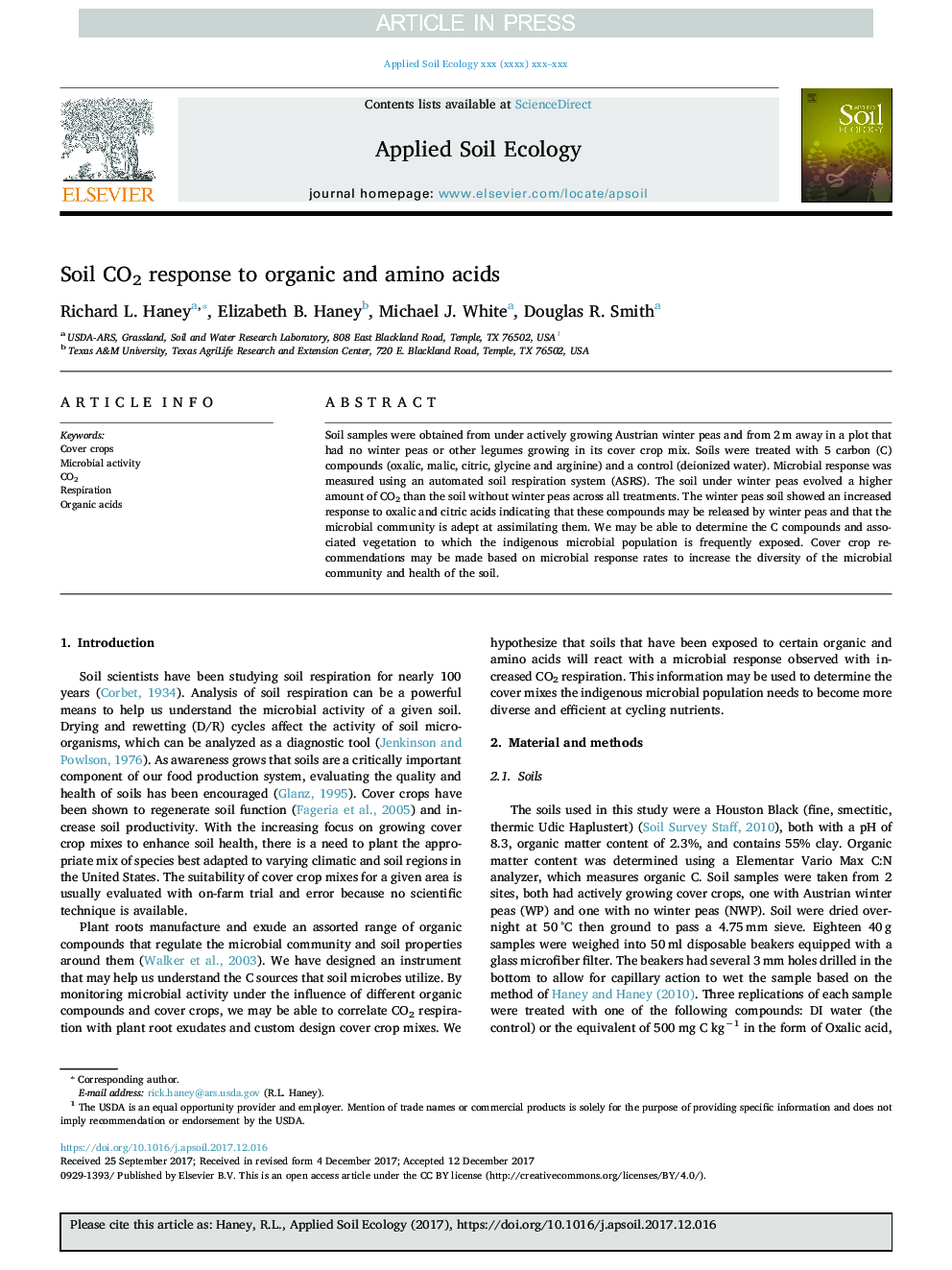| Article ID | Journal | Published Year | Pages | File Type |
|---|---|---|---|---|
| 8846743 | Applied Soil Ecology | 2018 | 4 Pages |
Abstract
Soil samples were obtained from under actively growing Austrian winter peas and from 2â¯m away in a plot that had no winter peas or other legumes growing in its cover crop mix. Soils were treated with 5 carbon (C) compounds (oxalic, malic, citric, glycine and arginine) and a control (deionized water). Microbial response was measured using an automated soil respiration system (ASRS). The soil under winter peas evolved a higher amount of CO2 than the soil without winter peas across all treatments. The winter peas soil showed an increased response to oxalic and citric acids indicating that these compounds may be released by winter peas and that the microbial community is adept at assimilating them. We may be able to determine the C compounds and associated vegetation to which the indigenous microbial population is frequently exposed. Cover crop recommendations may be made based on microbial response rates to increase the diversity of the microbial community and health of the soil.
Related Topics
Life Sciences
Agricultural and Biological Sciences
Ecology, Evolution, Behavior and Systematics
Authors
Richard L. Haney, Elizabeth B. Haney, Michael J. White, Douglas R. Smith,
